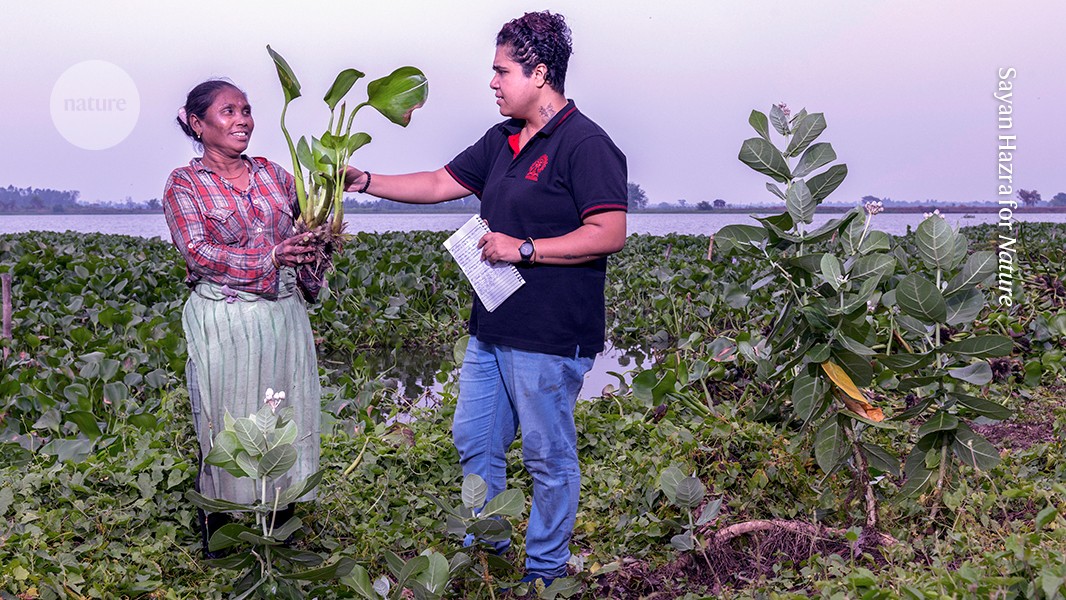“In this photo, I’m standing in a sewage-fed pond in the East Kolkata Wetlands in India. These wetlands span 125 square kilometres and treat nearly 80% of the city’s waste water naturally. Every day, they recycle 750 million litres of waste water and produce 22 tonnes of fish and 150 tonnes of vegetables.
There are 254 sewage-fed ponds in the wetlands, and each has its own dynamic in terms of size, ownership and ecology. This one is owned by a cooperative, in which the profits are shared equally among the members. Here, I’m standing with a fisherwoman who helps to clean and maintain the pond, in part by removing plants such as the water hyacinth (Pontederia crassipes) that she’s holding. Although water hyacinths absorb toxic metals, provide shelter for fish and prevent soil erosion, having too many of them can harm the pond.
In 2007, I started my research on this region by using archival material to construct the 250-year history of the canal system. When the British colonized India, they chose Kolkata as a site to develop, given its location, ecology and terrain.


